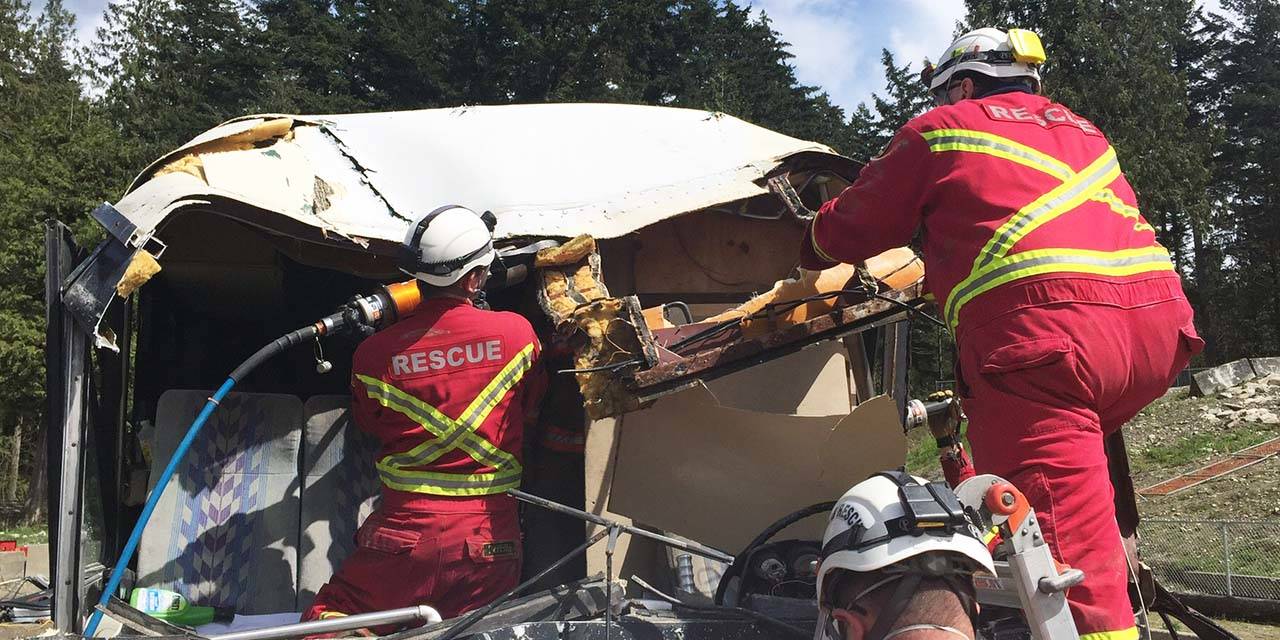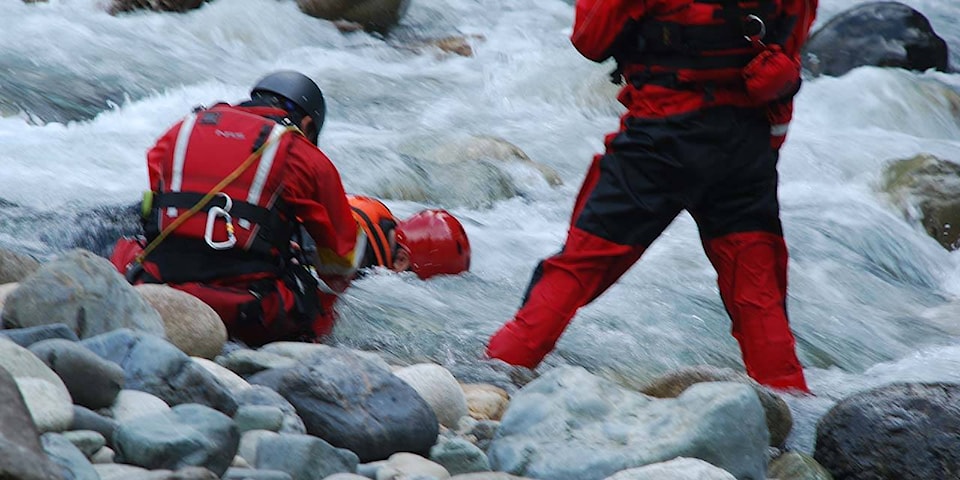The Hope Volunteer Search and Rescue (HSAR) group sees a lot of dangerous, life-threatening, situations and take their responsibility very seriously.
It’s a good thing, because, if you’re one of the people involved in the average of 100 incidents a year to which HSAR responds, the image of the orange-clad volunteers coming to your aid may be the most welcome sight you will ever see.
HSAR manager Mario Levesque recalls an incident where his crews were called out to do a rope rescue at the Peter’s Road exit and were required to go down a 50-foot drop to recover the driver of a tractor trailer who went off the highway and careened down the embankment.
“We had to get down there by rope, extricate him from the vehicle and get him back up to the waiting ambulance. It was a challenging rescue,” Levesque said.
“Of course, we’ve done longer rope rescues, going down some three- or four-hundred feet.”
HSAR is a registered non–profit organization operating out of the District of Hope, under guidelines set out by the British Columbia Provincial Emergency Program (PEP). HSAR’s primary role is that of a community resource to assist the Royal Canadian Mounted Police, British Columbia Ambulance Service, and British Columbia Coroner Service in a variety of auto extrication and search-and-rescue functions.
“We’re entirely made up of volunteers who are on call 24/7 and respond to every kind of emergency you can imagine.
“We respond to motor vehicle accidents, we do avalanche recovery, fast water rescue, search and rescue for lost hikers, all kinds of situations ... and they all tend to be very intense” Levesque said.
“We go from calm to life-threatening situations in the blink of an eye. But it’s very rewarding work.”
HSAR has just graduated five new members from their rigorous training course and another four members who are in different stages of training at the current time.
In total, the training takes about six months to complete and involves one night a week in the classroom and three or four weekends of field work in which they learn the use of maps and compasses, rope management, and survival.
“One of the last things we do with recruits is to put them on a survival campout. We send them into the backcountry with only certain equipment (bags are checked to ensure nothing extra is brought in) and they have to stay safe, warm and find nutrition.
“It simulates a situation where you go into a rescue situation and find that you have to spend the night in the bush.”
The training initially given to the HSAR volunteers is later augmented by additional training in things like avalanche recovery.
Levesque said that many of the calls to which HSAR responds are the result of human error, or just plain silliness on the part of people.
“Take the Othello Tunnels as an example. Every year, it seems, we get someone who thinks they can swim from the big rock, about 500 feet across the fast river. They can’t.
“We end up pulling them out of the water behind the #1 tunnel. But it’s not that easy. We have to be certain that, when we put someone in the water, they are safe. It takes training, physical fitness and courage to do the job,” Levesque said.
HSAR’s area of responsibility (approximately 65,000 sq/km²) covers the eastern Fraser Valley from Herrling Island (east of Agassiz) to Boston Bar, as well as Highway 3 (to Manning Park’s east gate) and Highway 5 to the Coquihalla summit.
Recreational activities in the Skagit Valley, boating on the Fraser River, and snowmobiling in the accessible alpine areas all create a long list of credible hazards that claim several lives and injure many people each year.
“For us it’s always a matter of looking for new volunteers to deal with the volume of work we do. Remember, we are all volunteers. It’s also a matter of getting the right equipment in place that’s a constant struggle,” Levesque said.
Anyone wishing to volunteer for the HSAR unit, or those looking for further information, should go online to bcsara.com.

